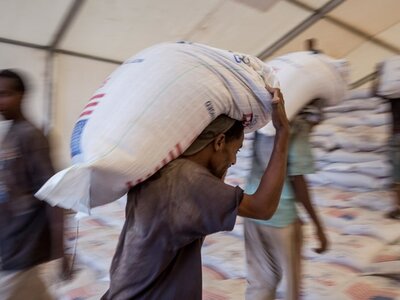Supply chain planning
- 93
- countries where WFP buys food
- 152
- countries where WFP buys goods and services
- 75+
- countries receive food from WFP - by air, land and sea
- 62
- countries receive WFP's cash assistance
Sourcing food from 93 countries, moving goods to more than 100 and delivering cash assistance to over 60, in an average year the World Food Programme (WFP)’s supply chain reaches more than 85 million people in need.
Given the complexities of running such a huge operation, good planning is essential to ensure we can help even more people with the same resources and manage on-time deliveries. The unpredictability of disasters and crises – which can make WFP needs spike overnight – and the difficulty of forecasting the ebb and flow of donor contributions make this function all the more important.
We have made a series of changes to make supply chain planning more flexible. These include better demand planning data, a variety of advance financing tools, and more diverse types of humanitarian assistance – whether it is food, cash or a combination of the two. Our end-to-end supply chain management enables us to intervene successfully in large and complex emergencies, including in insecure and volatile environments. In Syria, we were able to reduce lead times by 40 days since the start of the operation, by utilizing advance financing mechanisms that allow us to call forward urgently needed food commodities.







